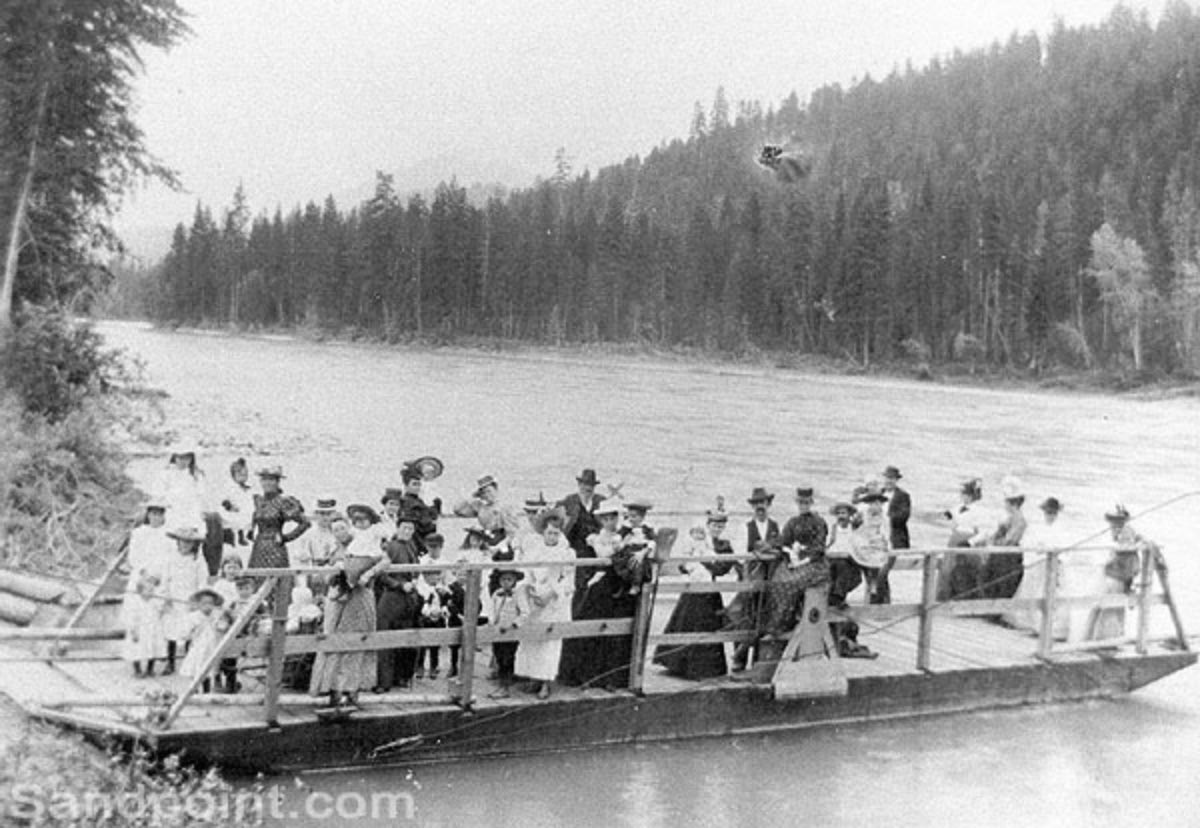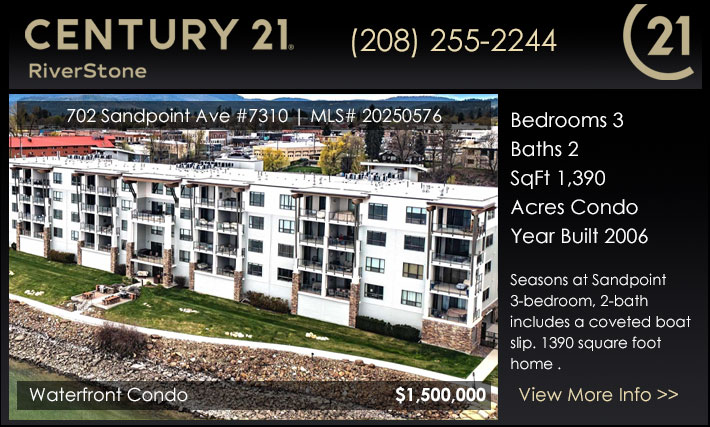

:: Clark Fork Idaho History::
The Clark Fork Ferry
In 1916 when the drive for a bridge over the Clark Fork river was nearing an end a reporter wrote "The Clarkfork river basin affording an easy grade will in the end be the through road for the northern part of the state. It is the only feasible pass for the north."

The reporters conclusion may have been based on the fact that Lewis and Clark found this route west a century before a growing community was looking for a better way to cross the river than by ferryboat.
The topography of the area left little choice but to cross over the river when traveling east or west. This was true well into the 20th century until men and machinery learned to cope with the rock faces of the Cabinets. Even today a trip from Heron, Montana to Clark Fork, Idaho clearly reveals the formations that gave Clark Fork a part in the history of the region and a reason for the ferry.
Lalia Moore, in her dictionary of Idaho Place Names comments that the site (Clark Fork) "seems to have been used by fur trappers as early as 1809." With them came the beginnings of an early ferry, if only made of logs lashed together with some sort of a makeshift platform. In the absence of records it is reasonable to assume that a private or toll ferry did operate at Clark Fork, long before the need for regulation and probably afterwards as well.
Some records indicate a ferry operating in 1893. Since that was at least 10 years after the Northern Pacific came through, it is most likely that there was a considerable amount of river crossing during the construction of both the railroad bridge and trackage on both sides.
A considerable factor in ferry operations here and up stream was water flow. The Pend d'Oreille Review reported on December 29, 1916, that "The Clarksfork river handles a volume of water much larger than the Snake river. At times during high water, the flow amounts to as much as 94,000 cubic feet per second. The average width of the river is about 1300 feet. The velocity of the river at certain times is very large, about eight miles an hour. Due to this it is necessarily very hazardous to operate a ferry at Clarksfork at any time and very dangerous and at some times impossible to operate a ferry at all."
The problem of crossing the river aside, someone had earlier written that Clark Fork, "It is a good place for both rich and poor to live." That sort of pride probably prompted a petition for a free ferry. On May 13, 1904 a bid was awarded to John Lloyd and John Hagbo for a ferryboat to cost $275.00.
All photographs have been used with permission of the Bonner County Museum. If you have more historical data on Clark Fork Idaho, please feel free to contact us and we will add it here!
Search Clark Fork Real Estate | Meet a REALTOR | Request a Clark Fork Property
305 N First Ave, Sandpoint, ID 83864 | (208)255-2244 | toll free (800) 205-8771


Early Indians in the area to the left and The Hope Hotel on the right: These are some more photos of historical topics in the Clark Fork area.

